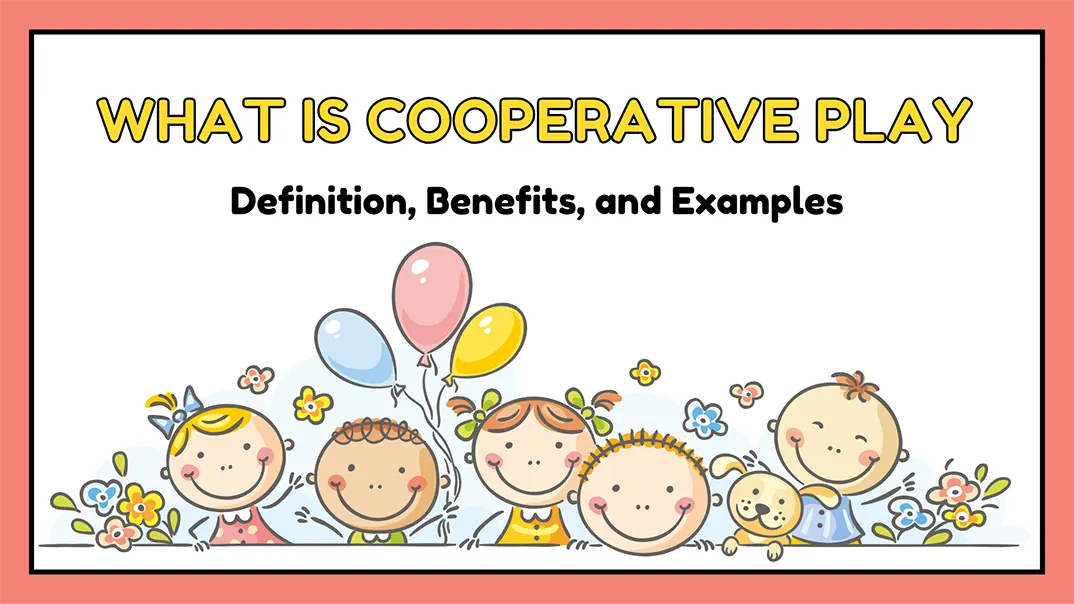Do you notice differences in how preschoolers interact during playtime, with some showing strong teamwork skills and others preferring to play alone? These variations in behavior can be linked to a crucial stage in childhood development known as cooperative play—but what exactly does that mean, and how can you support it effectively?
Cooperative play is the stage where children begin to work together toward shared goals, communicate their ideas, take on group roles, and solve problems as a team. It typically emerges around ages 4 to 5 and is essential for building empathy, conflict resolution skills, and emotional intelligence. Understanding what cooperative play is and how it differs from earlier play stages helps educators and parents create developmentally appropriate environments where collaboration can flourish.
In this article, we’ll dive into the definition and characteristics of cooperative play, explore its benefits for young learners, and provide real-life examples and strategies to promote it. Keep reading to learn how to support children in becoming confident, cooperative, and socially capable individuals.
What Is Cooperative Play?
Cooperative play is a stage of social development in which children actively engage with one another to achieve shared goals. In this form of play, kids communicate, assign roles, negotiate rules, and collaborate as a team—whether they’re building a fort, creating a group mural, or putting on a pretend play performance. Unlike earlier stages of play, cooperative play requires mutual understanding, empathy, and the ability to compromise, making it one of early childhood’s most socially advanced forms of play.
This type of play typically emerges between ages 4 and 5, when children become more aware of others’ feelings, thoughts, and perspectives. At this stage, they play with others and work together in structured, goal-driven ways. Cooperative play strengthens communication, problem-solving, and leadership skills—traits essential for lifelong learning and relationship building.
Mildred Parten’s Theory
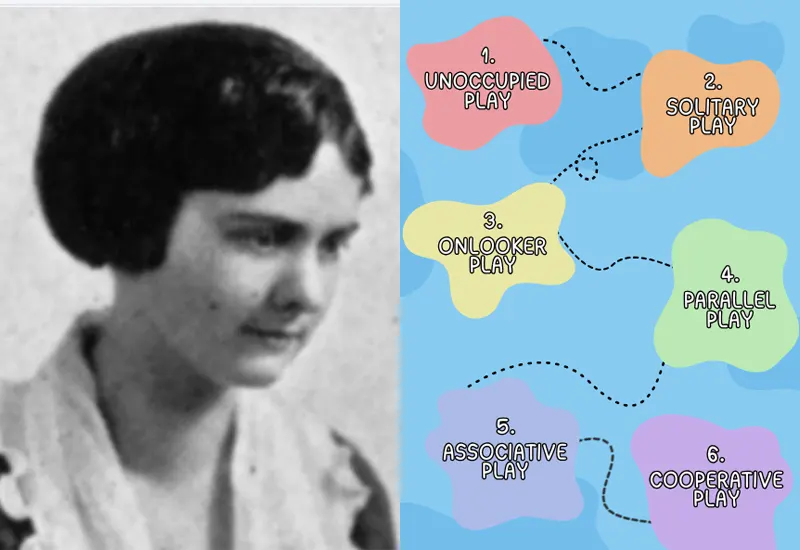
To fully understand the significance of cooperative play, it’s helpful to explore the foundation laid by Mildred Parten, a pioneering sociologist and researcher in early childhood development. In the 1930s, Parten introduced a groundbreaking theory that identified six distinct stages of play, each reflecting the increasing complexity of children’s social interactions as they grow.
Parten’s research emphasized that children’s play behavior evolves with age and social maturity. Her theory is still widely used today to assess and support children’s developmental progress in educational and clinical settings.
Here’s a breakdown of her six stages:
- Unoccupied Play: The child is not actively playing but may observe or move aimlessly. This stage, though subtle, is a child’s way of exploring their environment and preparing for later stages.
- Solitary Play: The child plays alone and is not interested in or aware of what others do. This is common in toddlers and helps develop focus and independence.
- Onlooker Play: Children watch others play but don’t join in. They may ask questions or express interest, learning through observation before feeling confident enough to participate.
- Parallel Play: Children play side by side using similar toys, but do not interact directly. While it may seem disconnected, it’s crucial to learning to coexist with peers.
- Associative Play: Interaction increases—children share toys and talk to each other, but their play isn’t yet fully coordinated or focused on a shared goal.
- Cooperative Play: This is the most advanced stage, where children play together with organized roles and goals. It involves teamwork, communication, and a clear sense of group identity.
These stages are not rigid steps but a fluid progression. A child may shift between them depending on their mood, environment, or the people around them. However, cooperative play stands out as a significant milestone—where the foundational skills from earlier stages come together, and genuine social interaction begins to flourish.
Characteristics of Cooperative Play
Cooperative play stands out from other types of play because it relies on mutual engagement, shared purpose, and social interaction. When children participate in cooperative play, they’re not just playing side by side—they’re working together toward a common goal. This collaborative dynamic introduces a range of unique characteristics that define this stage of social development.
- Shared Goals: Children engage in an activity with a common purpose, whether building something, playing a group game, or acting out a scene. Success in the activity depends on working together and contributing toward the group’s objective.
- Role Assignment: Each child may take on a specific role, such as a leader, helper, or character in pretend play. These roles are often negotiated among peers and may change fluidly throughout the activity.
- Communication and Negotiation: Verbal interaction is essential in cooperative play. Children express their ideas, listen to others, solve conflicts, and make decisions as a group. This helps develop language skills, emotional intelligence, and compromise.
- Problem-Solving Together: Challenges that arise during play—like how to build a stable structure or agree on the rules—are tackled as a team. Cooperative play fosters critical thinking and collaboration under real-time conditions.
- التعاطف واتخاذ المنظور: Children begin to understand and respond to the thoughts and emotions of their peers. This stage encourages kindness, patience, and inclusive behavior as children learn to care about how others feel.
- Mutual Respect and Rules: Agreements are often made—spoken or unspoken—about how the play will unfold. These self-regulated rules help children practice fairness, turn-taking, and respectful boundaries.
- Sustained Engagement: Cooperative play typically lasts longer than solitary or parallel play, as children remain focused and invested in group dynamics. They are motivated not just by the activity, but by the social experience itself.
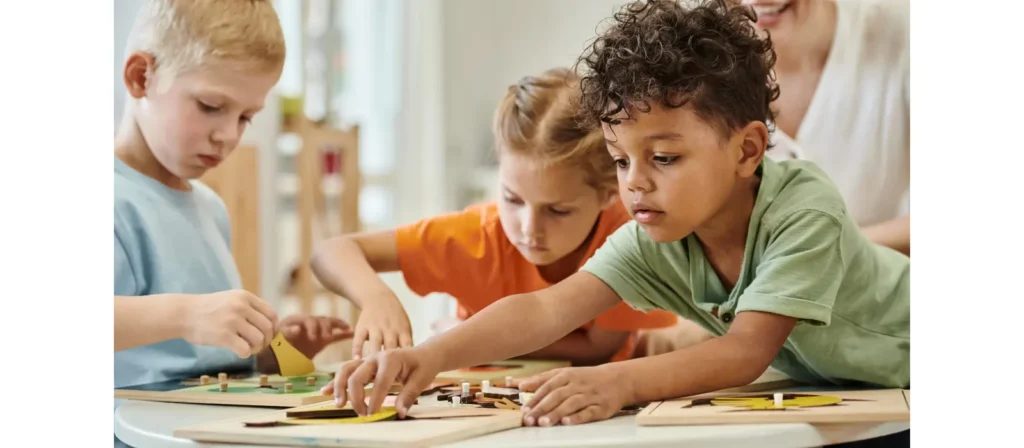
Examples of Cooperative Play
Cooperative play can take many forms, depending on the بيئة التعلم, age group, and available resources. When given the opportunity and encouragement, children find endless ways to engage with others at home, in a classroom, or on the playground. Below are real-world examples of cooperative play that demonstrate teamwork, communication, and shared goals:
1. Social Interaction
At the heart of cooperative play is meaningful interaction with peers. Children must learn to engage, respond, and adapt to others in real time.
Examples include:
- Negotiating who gets which role in a pretend play scenario (e.g., “You be the doctor, I’ll be the nurse.”)
- Compromising when there’s disagreement (“Let’s use both colors instead of choosing one.”)
- Assigning roles in building or dramatic play
- Actively helping each other solve problems or complete tasks during group activities
2. Shared Goals
Cooperative play thrives when children are working toward the same outcome, whether that goal is creative, problem-solving, or simply having fun together.
Examples include:
- Building a tall block tower together and celebrating its completion
- Playing a cooperative board game where all players win or lose as a team
- Working on different parts of a group art mural with a shared theme
- Children planning a performance (e.g., puppet show) and preparing props, lines, and music
- Playing ball games where children take turns passing and scoring as one team
3. Language Use
Communication is essential in cooperative play. Children deepen their social connection and language development through talking, listening, questioning, and explaining.
Examples include:
- Asking questions like, “What should we build next?” or “Can I use that block after you?”
- Practicing complete sentences in roleplay conversations (“Welcome to my restaurant, what would you like to eat?”)
- Describing what they’re doing to help others follow along
- Giving instructions or suggestions (“Let’s put all the blue pieces on this side.”)
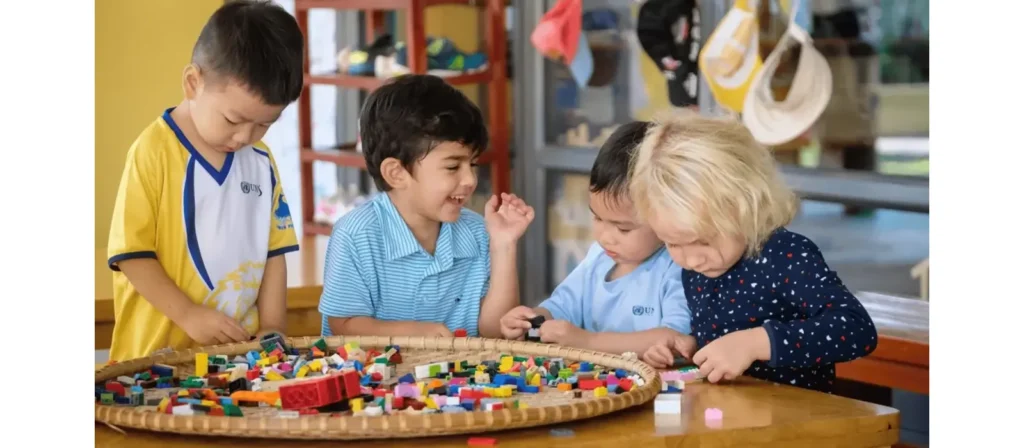
4. Self-Regulation
To cooperate successfully, children must control impulses, manage emotions, and delay personal gratification in favor of group harmony.
Examples include:
- Waiting patiently for their turn during a game without interrupting
- Accepting disappointment when they don’t get their preferred role
- Stepping aside to let a friend take the lead so the game can continue
- Staying calm and finding solutions when a plan doesn’t go as expected
5. Agreed Rules
Cooperative play often involves following pre-established rules or creating them together, which teaches fairness, order, and accountability.
Examples include:
- Children setting ground rules for a new game they invent
- Agreeing to change the rules together when something isn’t working
- Taking responsibility for following rules they helped create (“We said no running indoors, remember?”)
- Respectfully reminding each other of the group’s guidelines
What Is the Difference Between Parallel Play and Cooperative Play?
While parallel play and cooperative play are essential stages in a child’s social development, they differ significantly in terms of interaction, communication, and purpose. Understanding these differences helps parents and educators identify where a child is developmentally—and how to support their growth.
| وجه | Parallel Play | Cooperative Play |
|---|---|---|
| التفاعل الاجتماعي | Minimal or no direct interaction | Active interaction and communication |
| Focus of Play | Children play independently, side by side | Children play together with a shared goal or storyline |
| تواصل | Limited to occasional observation or mimicry | Ongoing dialogue, planning, negotiation, and problem-solving |
| Shared Goals | Each child has their own play objective | Children work toward a common goal or narrative |
| أمثلة | Playing with blocks near each other without engaging | Building a tower together or role-playing a family scene |
| Developmental Stage | Common in toddlers (ages 2–3) | Typically begins around age 4–5 |
In parallel play, children are often content to be near one another without joining forces. It serves as a bridge between solitary behavior and more socially complex forms of interaction. Children observe and learn from others, but their play remains independent.
By contrast, cooperative play requires children to share ideas, take turns, assign roles, and actively engage with each other to build something together—physically or imaginatively. It demands a higher level of social, emotional, and cognitive maturity.
When Does Cooperative Play Begin?
Cooperative play usually emerges around ages 4 to 5, though this can vary depending on a child’s development and social environment. At this stage, children are becoming more socially aware, emotionally responsive, and linguistically capable—all essential ingredients for working together with others during play.
Developmental signs that indicate a child is ready for cooperative play:
- Improved communication: They can express ideas clearly and understand others.
- Emotional regulation: They begin to manage frustration and take turns without significant conflict.
- Interest in peer relationships: They seek out friends and show enjoyment in group activities.
- Understanding rules and structure: They can follow game rules and accept group decisions.
While age 4 to 5 is a general guideline, observing each child individually is essential. Some children may show signs earlier, while others may need more time and support to reach this stage. What matters most is providing consistent opportunities for shared activities, modeling positive interactions, and creating a safe, inclusive environment for cooperative learning to thrive.
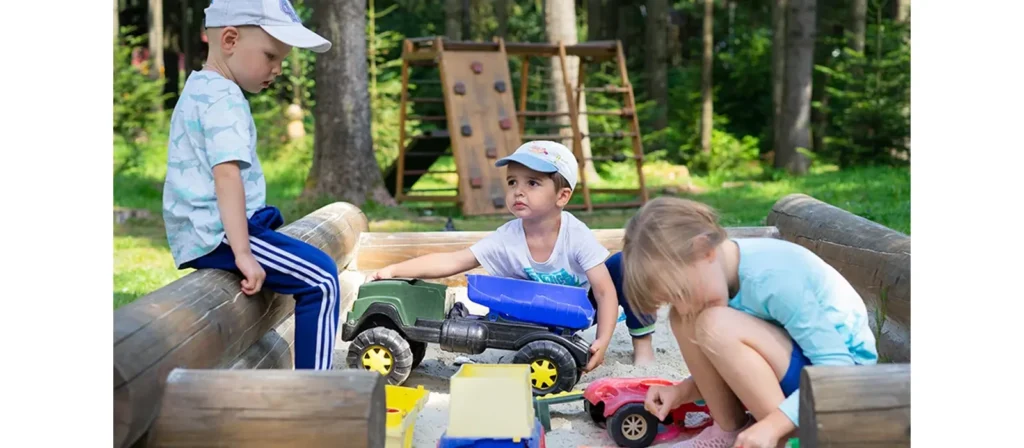
Factors That Influence Cooperative Play
While cooperative play is a natural developmental milestone, several factors can affect when and how a child engages in it. Recognizing these influences helps parents and educators create environments that better support children’s social growth. Here are the main factors that impact cooperative play:
- Age and Developmental Stage
Children typically begin cooperative play around ages four to five, but their readiness can vary based on cognitive, emotional, and language development. - Language and Communication Skills
Kids with stronger verbal abilities are often more confident in expressing ideas, negotiating roles, and resolving conflicts—key components of cooperative play. - Personality and Temperament
Outgoing children may gravitate toward social play earlier, while more introverted or cautious kids may prefer solitary or parallel play for longer. - Social Exposure
Regular interaction with peers—through playgroups, preschool, or family gatherings—can significantly encourage and accelerate cooperative behaviors. - مشاركة الوالدين
Parents and caregivers who model sharing, empathy, and teamwork help children internalize and use those behaviors in play. - Cultural and Environmental Factors
Cultural norms around independence, group behavior, or authority roles can shape how children engage in play. Similarly, an overstimulating or under-resourced environment may limit opportunities for cooperation. - Emotional Safety and Trust
Children are more likely to engage in cooperative play when they feel secure, valued, and supported by adults and peers around them. - Availability of Play Materials
Toys and activities that encourage group interaction—like building sets, board games, or pretend play items—can naturally foster cooperation. - Siblings and Family Structure
Children with siblings often develop cooperative skills earlier through shared activities, negotiation, and conflict resolution at home. - Teacher or Adult Facilitation
Skilled teachers who encourage teamwork, guide role-play, and mediate conflicts can dramatically enhance cooperative play experiences in structured settings like preschool.
Why Cooperative Play Is Important?
Cooperative play offers a wide range of developmental benefits beyond simple entertainment. It is critical in children’s social, emotional, and التطور المعرفي. When children engage in cooperative play, they have fun and build skills that lay the groundwork for lifelong learning and healthy relationships.
1. Develops Communication and Language Skills
Children constantly talk, negotiate, explain, and listen in cooperative play. These back-and-forth conversations help them expand their vocabulary, practice sentence structure, and improve their ability to express thoughts and emotions. As a result, their communication becomes more purposeful and socially responsive.
2. Strengthens Social Skills and Teamwork
Cooperative play teaches children how to work with others, take turns, and solve disagreements peacefully. They begin to understand group dynamics, develop patience, and learn to compromise—essential skills for classroom learning, group projects, and later life situations.
3. Encourages Emotional Intelligence
By interacting closely with peers, children begin to recognize emotions in others and respond with empathy. They learn how their actions affect their friends, which nurtures kindness, understanding, and emotional regulation—all core aspects of emotional intelligence.
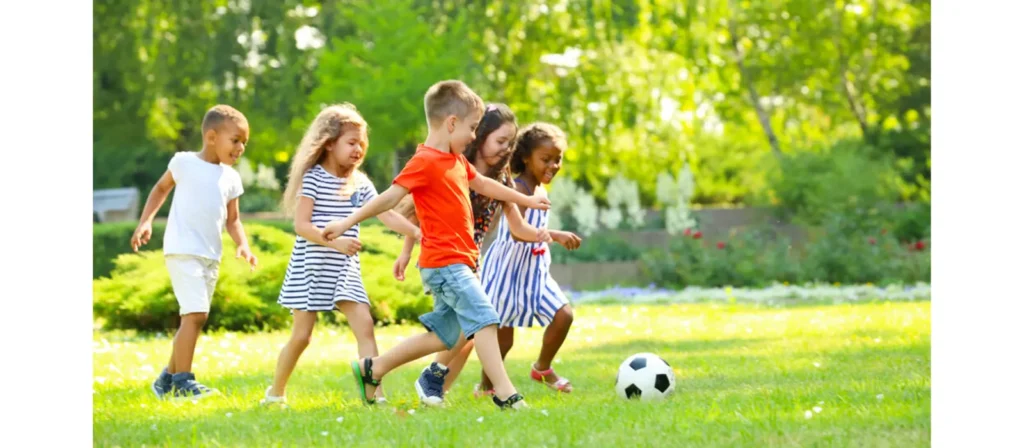
4. Builds Conflict Resolution Abilities
Disagreements are a natural part of group play. During cooperative play, children learn to handle conflict constructively—whether by discussing rules, sharing leadership, or finding alternative solutions. These early experiences with negotiation build confidence in problem-solving under pressure.
5. Enhances Cognitive and Executive Function Skills
Cooperative play often involves planning, sequencing, following multi-step directions, and remembering group rules. These experiences strengthen memory, attention, and self-control—key executive function skills linked to academic success.
6. Fosters Creativity and Imagination
When children collaborate on pretend play or creative projects, they combine ideas in new ways, leading to richer narratives and more imaginative outcomes. Group storytelling, role-play games, or building challenges all boost creativity while deepening social bonds.
7. Promotes Leadership and Responsibility
Children naturally assume different roles during cooperative play, such as organizer, helper, or problem-solver. This boosts their confidence and nurtures a sense of responsibility and accountability to the group.
How to Encourage Cooperative Play?
While cooperative play is a natural developmental stage, it doesn’t always emerge on its own. Children need the right بيئة ما قبل المدرسة, gentle guidance, and plenty of opportunities to explore working with others. By intentionally shaping their play experiences, adults can help nurture cooperation, empathy, and teamwork from an early age.
1. Model Cooperative Behavior
Children learn social behavior primarily by observing the adults around them. Children take notice when you consistently demonstrate kindness, patience, and collaboration in your own actions—such as sharing responsibilities, problem-solving with others, or simply taking turns in conversations. They begin to mirror these behaviors in their play. It’s also helpful to verbalize your actions as you model them. Saying “Let’s clean this up together” or “I’ll wait for my turn” gives children clear language to associate with cooperative behavior.
2. Design the Environment for Group Play
The physical layout of a classroom or playroom can significantly impact how children interact. Spaces that are too cramped or segmented may limit collaboration, while open, flexible areas naturally invite it. Consider arranging areas where small groups can gather comfortably—like a reading nook, a shared art table, or a construction zone. Group seating, labeled zones, and clearly organized materials can all signal that cooperation is expected and welcome.
3. Provide Open-Ended Materials
Children are more likely to engage in cooperative play when their environment invites creativity and interaction. Open-ended toys without a fixed outcome are ideal for encouraging shared exploration and collaboration. Some of the best materials include:
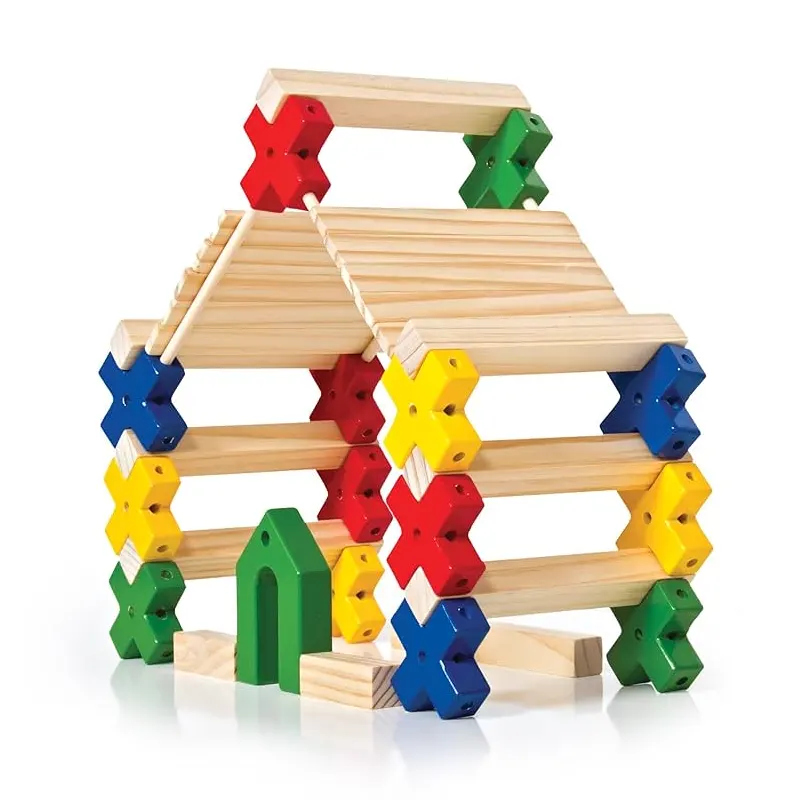
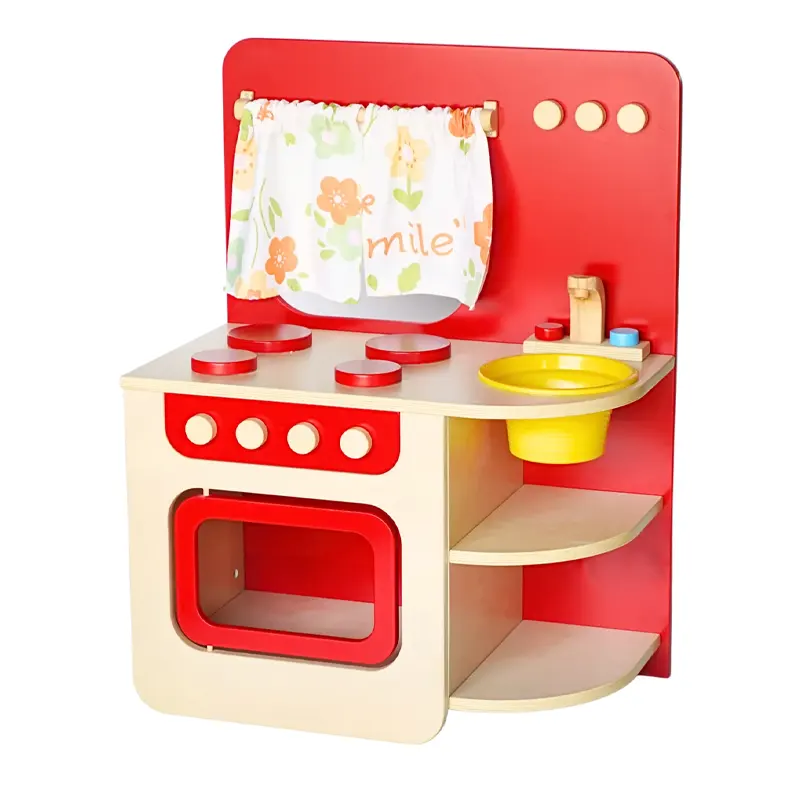

- Building blocks and construction sets
- Dramatic play items like play food, costumes, and puppets
- Large art materials such as butcher paper, clay, and washable paints
- Sensory bins with multiple tools or textures
These resources promote communication, shared problem-solving, and imaginative teamwork.
أرسل لنا رسالة إذا كان لديك أي أسئلة أو اطلب عرض أسعار. سيقدم لك خبرائنا الرد خلال 48 ساعة ويساعدونك في اختيار المنتج المناسب الذي تريده.
4. Assign Group Goals or Shared Tasks
Children develop stronger cooperative skills when they have meaningful reasons to work together. Providing shared tasks encourages them to communicate, plan, and rely on one another. For example, you might invite a small group to create a pretend restaurant, build a structure using blocks, or work together to care for class plants or animals. These kinds of group responsibilities give children a sense of ownership while encouraging social growth through shared effort.
5. Use Play-Based Group Activities
In addition to free play, structured group games are powerful tools for practicing cooperation. Choose games that require teamwork, turn-taking, and mutual success. Some examples include:
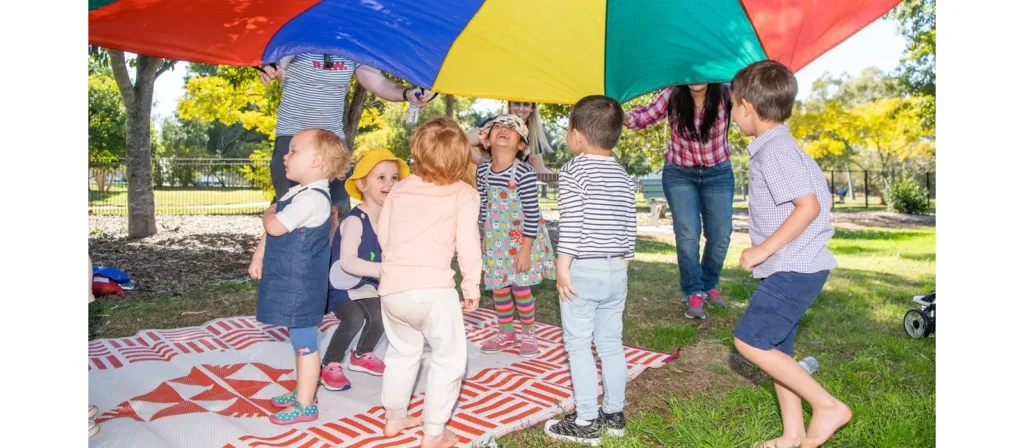
- Cooperative board games (e.g., “Outfoxed!”, “Count Your Chickens”)
- Parachute activities and movement games
- Team-based scavenger hunts
- Circle time games like “Pass the Rhythm” or “Freeze Dance”
These experiences teach important social skills and help children find joy in working with others toward a common goal.
6. Gently Guide and Support Conflict Resolution
Cooperative play doesn’t mean conflict-free play. In fact, disagreements are common and, when handled with care, offer some of the most valuable learning moments. Instead of immediately stepping in with solutions, adults should first observe, then guide children to express their feelings, listen to each other, and work toward compromise. Questions like “What happened?” or “How can we fix this together?” invite children to think critically and practice empathy. Over time, these small interventions help children become more independent problem solvers.
7. Praise and Reinforce Cooperative Behaviors
Children thrive on recognition and positive reinforcement. When you see a child sharing, listening, or helping others during play, describe what you observed and connect it to the value of cooperation. For example, saying “You waited so patiently for your turn—that was really respectful,” helps children understand which behaviors are positive and why they matter. Consistent encouragement builds confidence and reinforces social development.
8. Be Patient and Consistent
It’s important to remember that not all children are ready for cooperative play at the same time, and that’s perfectly normal. Some may prefer solo or parallel play for a while longer, while others easily jump into group activities. Consistency matters most—providing daily opportunities, modeling positive behaviors, and offering gentle guidance. Over time, even the most reserved children engage more actively with others when they feel safe, respected, and supported.
الأسئلة الشائعة
- What is the difference between associative play and cooperative play?
In associative play, children interact by sharing toys and talking, but their play isn’t organized toward a shared goal. In cooperative play, children actively work together with a structured plan, shared roles, and common objectives, making it more socially complex. - How does cooperative play benefit a child’s development?
Cooperative play helps children develop essential life skills such as communication, empathy, teamwork, problem-solving, and conflict resolution. It also boosts emotional intelligence and prepares children for collaborative learning and social environments like school. - What comes before cooperative play?
Before reaching cooperative play, children typically go through several earlier stages of social development, as outlined by Mildred Parten. These include unoccupied play, solitary play, onlooker play, parallel play, and associative play. The stage immediately before cooperative play is associative play, where children begin interacting and sharing materials but do not yet organize their play around a shared goal. - How can parents encourage cooperative play at home?
Parents can encourage cooperative play by setting up group activities like pretend play, board games, cooking tasks, or art projects. Modeling teamwork, offering positive reinforcement, and guiding conflict resolution also support cooperative behavior. - What if my child prefers playing alone—is that normal?
Yes, it’s completely normal for some children to prefer solitary or parallel play, especially at younger ages. Each child develops at their own pace. Gentle encouragement, exposure to group activities, and peer interaction can gradually help them move toward cooperative play. - What is an example of cooperative play in ABA?
In Applied Behavior Analysis (ABA), an example of cooperative play might involve two children working together during a structured activity, such as taking turns building a tower with blocks while following therapist-guided instructions. The therapist may use prompts and reinforcement to encourage sharing, turn-taking, joint attention, and communication—helping both children practice social skills within a supportive, data-driven framework.
خاتمة
Cooperative play is more than just children having fun together—it’s a powerful developmental milestone that supports essential life skills like communication, empathy, collaboration, and problem-solving. As the final stage in Parten’s theory of play, cooperative play reflects a child’s readiness to engage socially in more meaningful and structured ways.
Understanding cooperative play’s characteristics, benefits, and developmental context empowers parents, teachers, and caregivers to create supportive environments that encourage healthy social interaction. By offering the right materials, modeling positive behavior, and providing opportunities for group activities, adults can help children grow into confident, cooperative learners and friends.
From collaborative art tables to imaginative role-play sets, فوز الأطفال provides everything you need to help children thrive through cooperative play. Invest in the right environment, and you’ll see young minds grow in knowledge, kindness, confidence, and connection.

